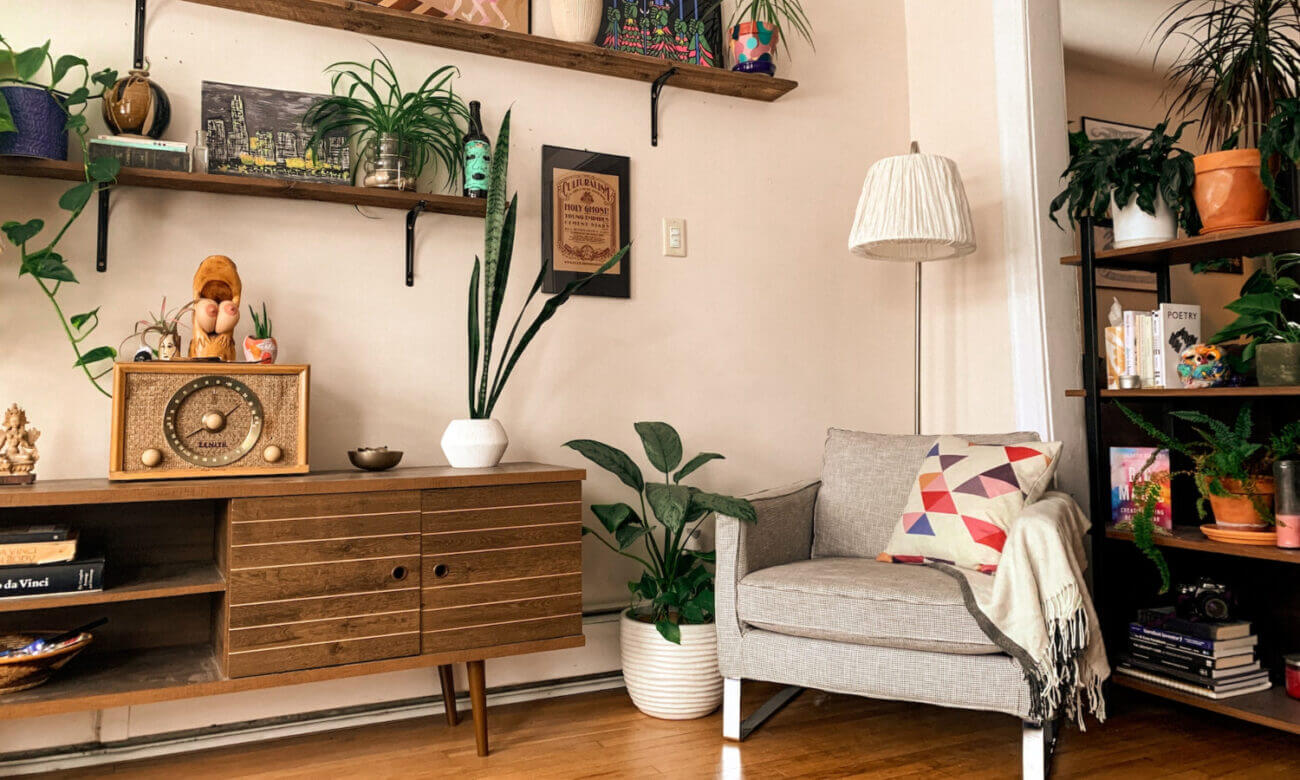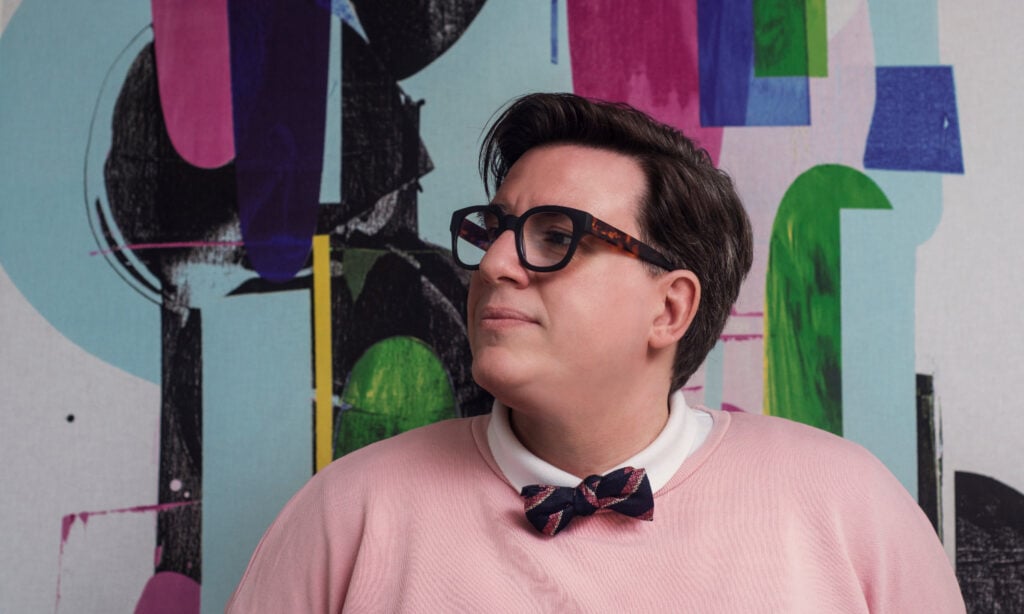But when you rent, you can’t just paint the walls or hang up art without getting your landlord’s permission first. So what can renters do to decorate on a budget? Before slapping down cash or a credit card, Elias Blunden-Stone, who runs The Room Editor—a service in which he reuses his clients’ belongings to redesign their space, says to start with what you already have.
“Working with what you have first—by moving stuff around to make it work harder, smarter or more beautifully, and only then adding affordable but impactful finds—always made more sense to me than starting from scratch and spending a ton,” says Blunden-Stone, who describes himself as a stylist, design journalist, collector, artist, maker, and passionate and savvy shopper.
MoneySense connected with Blunden-Stone to chat about how people can create or update their spaces in a fun yet financially smart way.
What financial pitfalls do people encounter when they decorate?
Spending more money on certain items than they have to. I pattern a very simple and affordable model of how to edit your space. Most of my clients are surprised by what is available to buy for less than they expected. They think they have to spend more money on certain home goods, and I show them affordable directions they might not have been aware of.
Why do people feel they need to start from scratch when redecorating?
Starting from scratch can be necessary, so I don’t discourage it under the right circumstances. Day to day, I think people mistake being tired of the things in their space for disliking them, so they decide to get rid of it all and start from scratch. In real life, when you are tired, you move around or you take a nap. Applying these same principles [to redecorating] by moving things around—giving them a good clean polish or taking a break from them by putting them aside for a while and shifting focus onto other things you have—will give you a fresh perspective before you start to spend on new things.
What are the benefits of using what you already own to redecorate?
First, there’s the savings, as you’re not likely to spend as much money on new things as you might be to refresh or reframe the things you already have. You are also eliminating the waste of throwing things away, and the terrible impact that may have [on the environment].
Interior designers have a different and amazing set of skills, and they work at a different level [than I do]. What I have done is create a service for people who don’t want the financial impact of the traditional design route. I take on very small jobs, such as finding a single lamp or rug. I embrace budget retailers, encourage DIY and suggest easy ways for clients to refresh and reframe their possessions themselves. I let clients do their own purchasing in their own time and at their own pace. This saves them not only in spending, but it saves them from feeling any kind of pressure.
What are some of the highest-impact ways to change a space on a small budget?
The top five things I would advise when tackling a space on a small budget are:
- Accessorize smartly with plants, books, affordable wall art and decorative textiles. These are all inexpensive ways to make a huge change to the look and feel of a space. My favourite tip for acquiring a lot of greenery within a short time is to have a dinner party and ask for houseplants in lieu of wine.
- Learn some DIY. If you find a bargain on something because it’s an odd colour or needs a little TLC, look into painting, fixing or refinishing it yourself. It’s often a lot easier to do than you’d think, and there are so many handy digital tutorials that can help. I watched one online tutorial video over 50 times, then had the confidence to rewire seven lamps myself. It can be as simple as taking a vibrant printed piece of fabric and stretching and stapling it over an old canvas frame. This makes a massive visual impact and can fill a huge wall space or even act as a headboard for very little money.
- Move things around. This is a simple but highly impactful way to make your space work harder and better, and it costs nothing.
- Embrace budget retail for things like a mirror or lamp shades that just sit there untouched most of the time. The function involves little physical contact, so why not look for a stylish budget-friendly option?
- Treat your budget furniture like it’s expensive. Some might think it’s OK to put their feet on their IKEA coffee table because it’s from IKEA, but then it deteriorates more quickly. And they wrongly imagine it’s the quality of the piece and not the wear-and-tear that has caused its demise. I have had IKEA furniture in my home for years because I treat it with respect.
If someone wanted to do something similar at home, with zero budget, how should they start?
A fresh set of eyes is a great way to kickstart your own editing process, so:
- Invite an opinionated friend over.
- Be open to questions about why you own something and why you’re using it in a particular way.
- Gather everything you want to keep and lay it out in an open space. Put the things you don’t necessarily want to keep aside for now.
- Identify anything you most want to celebrate and put it in a prime position. Repeat this process throughout your home.
- Fill in the gaps with anything you had previously put aside.
Any last advice?
Most things are in your space because you bought them. You may not love what they are doing at the moment, but you own them for a reason. Why not remember that love and make them work?
Read more about renting:



